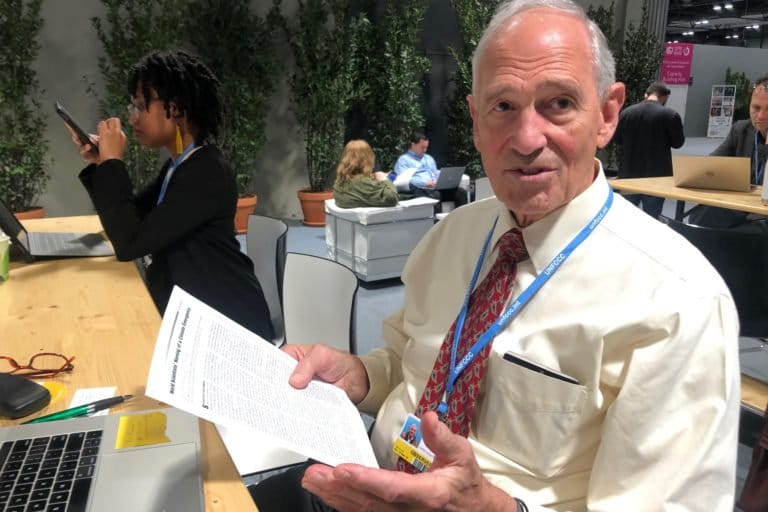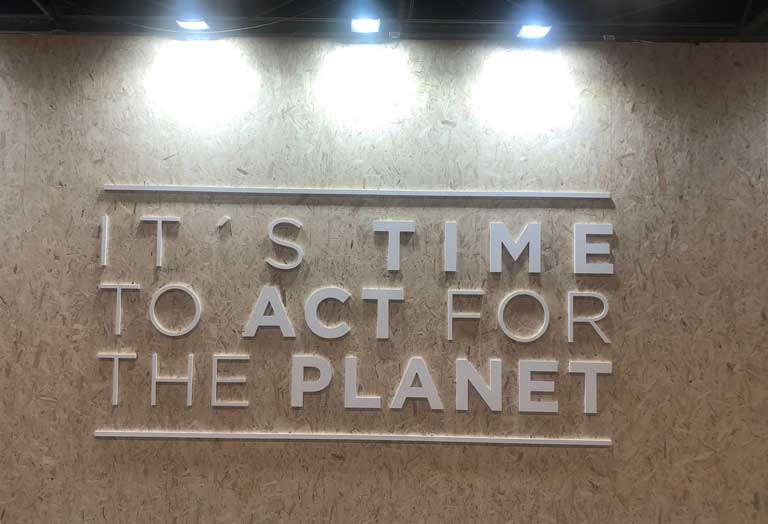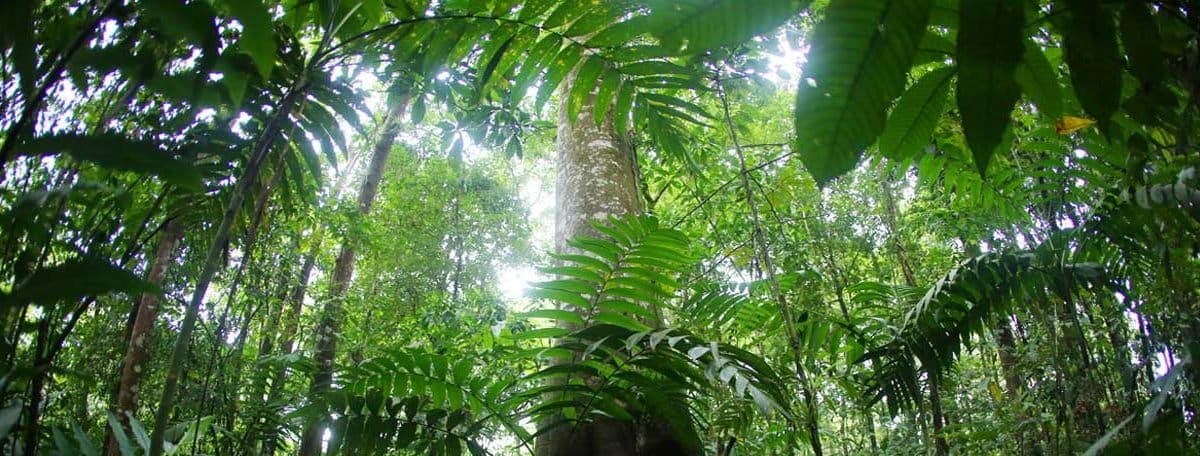- Even as half a million protesters demonstrate outside, UN climate summit negotiators inside Madrid’s COP25 seem blind to the urgency of the climate crisis. In fact, instead of making effective progress, the rules they’re shaping to carry out the Paris Agreement’s Article 6 could worsen carbon emissions, not staunch them.
- For example, Article 6 doesn’t include rules to protect native forests. Instead it could promote turning forests into monoculture tree plantations — providing minimal carbon sequestration and no ecosystem services, while devastating biodiversity. Some critics think the policy may have been shaped by logging interests.
- The so-called biomass carbon accounting loophole is also not up for discussion. Its continuance will allow the burning of biomass wood pellets at power plants, energy production classified by the UN as carbon neutral. However, establised science has found that industrial biomass burning will add significantly to carbon emissions.
- According to activists at COP25, delegates are working to hide emissions and allow UN carbon accounting loopholes. One key aspect of Article 6 found in the original Paris Agreement which guaranteed “the protection of human rights” was deleted from a revised draft Saturday night, as was verbiage assuring civil society and indigenous consultations.

MADRID, Spain – Climate sensation Greta Thunberg drew 500,000 people to a boisterous rally in central Madrid on Friday evening, near the end of the first week of negotiations at the 25th United Nations climate summit (COP25).
“We are getting bigger and bigger, and our voices are being heard more and more,” Thunberg told the crowd. “But of course that does not translate into political action. I sincerely hope that world leaders, the people in power, grasp the urgency of the climate crisis because right now, it doesn’t seem like they are.”
Inside the cavernous halls of COP25, the Conference of the Parties, delegates from UN member nations large and small appeared deaf to the rising global clamor for action — thus far shirking their responsibilities to lead in the kind of transformational change in energy production and land use that scientists warn is required immediately to slow the calamitous pace of global warming.
Instead, many delegates appear to be clinging to vested interests and outdated policy positions and definitions that haven’t kept pace with the science, while ignoring the urgency of a slew of alarming studies and reports — including one warning of a potentially catastrophic cascade of looming climate tipping points that could shatter ecosystem balance around the globe. In fact, evidence indicates that many delegations are promoting policy choices that actually undermine climate ambition.
“Over the last week at COP25 we have heard about the emissions gap, the funding gap, and the consumption gap. But I have never before seen an action gap so large between people all over the world as those sitting in the negotiations room,” said Manuel Pulgar-Vidal, leader of the World Wildlife Fund’s global climate and energy practice and Peru’s former minister of the environment. “Outside the COP, people are taking the climate crisis seriously, taking action, and taking to the streets. As we move to the Ministerial level in Madrid this week, we expect leaders to match our levels of ambition and close the action gap.”
Mongabay has seen little evidence so far that this “action gap” will close. Requests to speak with delegates representing developed and developing nations came up empty. No response. No comment. Meanwhile, hopes among NGOs and activists for the final week of COP negotiations — when table-setting policy technicians are displaced by decision-making politicians — have dimmed.
“I’m afraid I have low expectations for what’s going to come out of the end of this summit,” Bill Moomaw, professor emeritus of international environmental policy at Tufts University, told Mongabay. “It’s not going to move us far toward limiting temperature rise to 1.5 degrees Celsius [2.7 degrees Fahrenheit] or even 2 oC [3.6 oF], which we desperately need. Article 6 could undermine half of it, and lack of will the other half.”

Forlorn hope
Article 6 is the star of this show — the last rule in the Paris rulebook requiring negotiation. The Paris Agreement’s Article 6 and its rule book will establish complex policy mechanisms that establish carbon markets to provide financial incentives to encourage the world’s nations to voluntarily up their emissions-reduction ambitions.
At present, none of the world’s 20 largest economies, responsible for 70 percent of global greenhouse gas emissions, have increased their modest and inadequate carbon-reduction pledges since the Paris Agreement of 2015. None is expected to do so in Madrid, even as global emissions hit record highs in 2018, and after setting records the two previous years.
There is especially great concern among forest and land use experts interviewed here in Madrid by Mongabay. All had regular access to negotiators during the first week of COP25, and all these experts came away more worried than encouraged. They say that Article 6, if actually completed this week, would imperil old-growth forests and their biodiversity, while promoting the planting of monoculture tree plantations that provide minimal carbon sequestration or ecosystem services.
According to Virginia Young, director of climate and forests with the Australian Rainforest Conservation Society, the problem starts with the official definition of a forest, which the UN Food and Agriculture Organization (FAO) established more than two decades ago.
“My concern is that this convention has failed forests all along the line,” Young told Mongabay. “They failed in Kyoto in 1997. When they defined forests, they did not distinguish between primary, old-growth forests and monoculture tree plantations. Yet there is a fundamental difference between the carbon stock (sequestration capacity) and the stability of that stock in each. Treating them as identical from a carbon perspective is just nonsense.”

Troubling forest definition
Young suspects that the logging industry may have had a hand in the FAO forest definition. And reading that definition, it does not sound like any forest you may have ever hiked through.
According to the FAO: “Forest includes natural forests and forest plantations,” and one acre with just 10% tree cover with trees just 6-feet tall constitutes an official forest. FAO also states that a primary forest is still technically a forest for five years after it’s been clear cut.
“By those definitions, the Simpson Desert [in Australia] could qualify as a forest,” Young said. “Here’s the danger: emissions reduction goals are not based on protecting primary forests or reducing deforestation. They are based on planting more monocultures of trees. The way the [emissions] accounting system works, you can offset the carbon loss in a natural forest if you plant a monoculture of trees, and plant enough of them.”
This environmentally dangerous definition has been kept in place despite the repeated demands of environmentalists like Young to revisit the policy and honestly address ecological risk. Revising that definition under Article 6 is not on the COP25 agenda. So it is that Article 6, without safeguards, will likely incentivize deforestation as countries seek to sell or buy carbon offsets to technically reduce their own emissions.
What’s more, Young worries biodiversity, already under assault from warming temperatures and extreme weather events such as drought, will be further threatened.
“Biodiversity is not just about nice critters we’re trying to save,” Young said. “It’s about the functional role of every organism in the ecosystem. From a carbon perspective, biodiversity keeps forests stable and as resilient as possible. What we need is 100% natural forest protection and a focus on restoration to maximize ecosystem stability and resiliency.”

Cutting corners and cheating the baseline
Moomaw sees trouble everywhere: in how delegates, under Article 6, are trying to hide emissions, slip through loopholes, and get credit for emission reductions where none currently exist.
“Governments are saying, ‘It’s going to be hard to grow my forests so let me find a way to cheat my baseline,’” said Moomaw, an author of previous UN climate change reports and a respected expert among national leaders. “So they want to carry over reductions from the Kyoto Protocol. These will not be additional reductions from their forests; they’ve already been counted.
“The second thing many countries want to do is sell indulgences to other countries that ‘if we let our forests grow, you can count the reductions if you pay us. But we also want to count those reductions as ours, too,’” explained Moomaw. That’s a carbon accounting gambit known as “double counting.” And it’s the basis of a huge debate right now at COP.
“How much are they going to be able to get away with? One or the other, but probably some combination of both,” concluded Moomaw. Of course, the trouble with double counting is that nature won’t be fooled, and emissions will rise to everyone’s detriment.
Experts with the World Resources Institute (WRI), who typically aim for neutral to glass-half-full evaluations of COP negotiations, have been extra cautious when it comes to Article 6: “Strong rules are needed to ensure that double counting is avoided and that environmental integrity is preserved,” wrote WRI senior associate Kelly Levin in a briefing document. “With strong rules, Article 6 could also support higher ambition in mitigation and adaptation action.”
But, WRI warned: “A failure to agree on effective Article 6 rules, in light of the number of countries that signaled the use of carbon markets in their [carbon reduction pledges], will certainly weaken the achievement of the Paris Agreement’s goals and compromise its ambition.”
Importantly, one specific aspect of Article 6 enshrined in the original Paris Agreement calls for guaranteeing “the protection of human rights” in all aspects of carbon trading. But as Levin noted after a revised draft of Article 6 was released late Saturday night, December 7, language “safeguarding human rights has disappeared from the text.”
Other sources said delegates from Brazil, China and Saudi Arabia — tossing the most hand grenades into the drafting process — pushed for the stripping out of the human rights guarantee on the basis of “infringing on national sovereignty issues.” Language on consultations with civil society and indigenous people was also deleted, according to another Mongabay source. Neither the European Union nor the United States reportedly came to the defense of human rights or safeguards.

“We are past offsets”
Jannes Stoppel, a forests, land use, and climate expert with Greenpeace-Germany, has thought long and hard about the underlying premise of Article 6 — market-driven mechanisms to encourage what countries should be doing to cool the planet. He sees it as the wrong policy at the wrong time.
“If you create incentives through markets, it can easily help nations sell themselves out of the responsibility to act,” Stoppel told Mongabay. “That’s where we see the grave danger for ecosystems, land, biodiversity, indigenous peoples.”
Stoppel nearly despairs when he considers that delegates are spending so much effort on shaping Article 6 rules that would essentially allow one country that’s polluting too much, to pay another country that isn’t polluting much, in order for all to continue burning fossil fuels.
“We are past offsets; it’s about reducing all emissions now,” Stoppel said. “This offsetting market mechanism is potentially undermining the whole ambition of climate action.”
A year from now, at COP26 in Scotland, the entirety of the Paris Agreement goes into effect with rules and policies that will be difficult to revise or reverse no matter how scientifically invalid or harmful.
The experts quoted here are all fearful that COP25 organizers — Chile and Spain — will be desperate to claim some success, thus pushing through a dangerous version of Article 6 rather than leave it in limbo until the political will arises to make it meaningful for climate mitigation.
One such glaring example of bad UN policy re-entrenchment concerns a scientifically outdated Kyoto-era policy that negotiators refuse to acknowledge: the declaration that burning biomass in the form of wood pellets at power plants is carbon neutral (with nations not required to report emissions) when, in fact, a decade of scientific research has concluded that biomass is more carbon-intensive than the coal it’s replacing.
“Too many nations are wedded to business as usual,” Young said. “They don’t think creatively or even have a real sense of urgency despite all the awful storms and wildfires and climate refugees. Scientists talk about the need for transformational change, yet all we’re seeing in policies for land use and forest preservation are scaled-up business as usual. And that’s dooming us to failure.”
Justin Catanoso, a professor of journalism at Wake Forest University in North Carolina, covers climate change and climate policy for Mongabay; this is his sixth UN climate summit. Follow him on Twitter @jcatanoso
Banner image caption: Costa Rican rainforest. COP25 negotiators presently have no plans to protect native forests under Article 6 rulemaking, potentially a disaster for tropical forests and for the world. Image by Reht A. Butler / Mongabay.
FEEDBACK: Use this form to send a message to the author of this post. If you want to post a public comment, you can do that at the bottom of the page.

